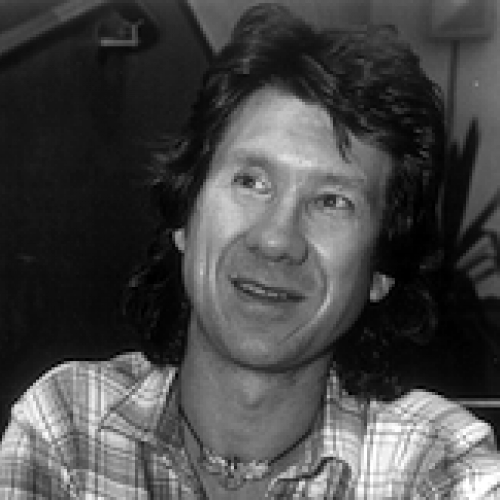cas/definition.php (people or term)

Chris Langton
Cellular Automata
Chris Langton is a research and computer scientist. His research interests include artificial life, complex adaptive systems, distributed dynamical systems, multi-agent systems, simulation technology, and the role of information in physics.
Langton is considered to be one of the founders of the field of artificial life, which he coined the term for. Artificial life is the study where researchers examine systems related to life, its processes, and its evolution, through the use of simulations with computer models, robotics, and biochemistry. Properties these simulations exhibit include reproduction, sexuality, swarming, and co-evolution.
Langton also worked on emergent behaviors found in complex adaptive systems, using cellular automata. Langton's "Ant Colonies" is a two dimensional machine that begins with a very simple set of rules with complex emergent behavior. It runs on a square lattice of black and white cells. Langton demonstrated that the same model could exhibit different modes of behavior, including simplicity, chaos, and emergent order. Simplicity is seen during the first one hundred moves and is often symmetrical. Chaos is seen later when irregular patterns appear. Emergent order happens when the recurring pattern repeats indefinitely
By using this link you can play with the ant colony: http://langtons.atspace.com/
Langton was interested in the boundary conditions where a system changes from one state to another, and believed that this boundary, between order and chaos, is where information flow is most effective. Because of this, he believed that life might, in some way, behave like a cellular automata, with rules naturally advanced a system towards 'the edge of chaos' He states, “Evolution tends to push systems towards the edge of chaos, where complex, interesting behaviors such as life can occur.”
Text adapted from a contribution by Megan Van Dalen, Iowa State University, 2021
Cite this page:
Wohl, S. (2022, 24 May). Chris Langton. Retrieved from https://kapalicarsi.wittmeyer.io/definition/chris-langton
Chris Langton was updated May 24th, 2022.
Nothing over here yet
Navigating Complexity © 2015-2025 Sharon Wohl, all rights reserved. Developed by Sean Wittmeyer
Sign In (SSO) | Sign In
Related (this page): Bottom-up Agents (22), Rules (213), Iterations (56),
Section: people
Non-Linearity Related (same section): Related (all): Urban Modeling (11, fields), Resilient Urbanism (14, fields), Relational Geography (19, fields), Landscape Urbanism (15, fields), Evolutionary Geography (12, fields), Communicative Planning (18, fields), Assemblage Geography (20, fields), Tipping Points (218, concepts), Path Dependency (93, concepts), Far From Equilibrium (212, concepts),
Nested Orders Related (same section): Related (all): Urban Modeling (11, fields), Urban Informalities (16, fields), Resilient Urbanism (14, fields), Self-Organized Criticality (64, concepts), Scale-Free (217, concepts), Power Laws (66, concepts),
Emergence Related (same section): Related (all): Urban Modeling (11, fields), Urban Informalities (16, fields), Urban Datascapes (28, fields), Incremental Urbanism (13, fields), Evolutionary Geography (12, fields), Communicative Planning (18, fields), Assemblage Geography (20, fields), Self-Organization (214, concepts), Fitness (59, concepts), Attractor States (72, concepts),
Driving Flows Related (same section): Related (all): Urban Datascapes (28, fields), Tactical Urbanism (17, fields), Relational Geography (19, fields), Parametric Urbanism (10, fields), Landscape Urbanism (15, fields), Evolutionary Geography (12, fields), Communicative Planning (18, fields), Assemblage Geography (20, fields), Open / Dissipative (84, concepts), Networks (75, concepts), Information (73, concepts),
Bottom-up Agents Related (same section): Related (all): Urban Modeling (11, fields), Urban Informalities (16, fields), Resilient Urbanism (14, fields), Parametric Urbanism (10, fields), Incremental Urbanism (13, fields), Evolutionary Geography (12, fields), Communicative Planning (18, fields), Rules (213, concepts), Iterations (56, concepts),
Adaptive Capacity Related (same section): Related (all): Urban Modeling (11, fields), Urban Informalities (16, fields), Tactical Urbanism (17, fields), Parametric Urbanism (10, fields), Landscape Urbanism (15, fields), Incremental Urbanism (13, fields), Evolutionary Geography (12, fields), Feedback (88, concepts), Degrees of Freedom (78, concepts),
